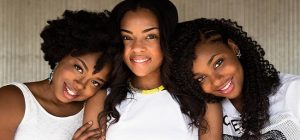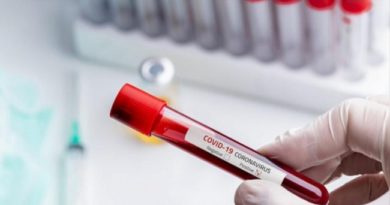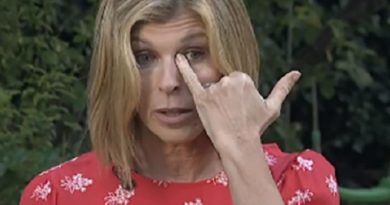LICE INFESTATION: How To Avoid And Overcome It
Lice are small, tricky to spot and can even hold their breath for eight hours, so they’ll be fine in the shower or in a pool. They have also developed resistance to many common treatments.
Recently, the case of a young corps member, who died after applying Snipper to her hair, dominated the news. The lady, Ayomikun Juliana, applied this pesticide to kill lice in her hair. After applying the chemical, she covered her hair with a cap and slept off. Having been discovered unconscious, she was rushed to the hospital the next morning. She died thereafter.
The young corps member, who was serving in Osogbo, Osun State, discovered that she had lice in her hair after. In order to get rid of the lice, she applied the Snipper to her hair and died from it.
In the last decade, experts have developed new treatments, but we still haven’t managed to eradicate lice altogether.
Lice were rampant in Egypt. At that time, most Egyptians would shave their entire bodies trying to get rid of the parasites.
Lice are barely visible wingless insects that infest the head, body or public area and live by sucking blood. They spread easily from person to person by close contact and shared clothing and other personal items. 
According to experts, there are 532 species of lice, but the most common types that plague humans are: body louse (Pediculus humanus corporis), head louse (Pediculus humanus capitis) and public louse (Pthirus pubis). All types of lice infestation occur worldwide.
Body louse is tiny insects, about the size of a sesame seed. Body lice live in clothing and bedding and travel to skin several times a day to feed on blood. The most common sites for bites are around the neck, shoulders, armpits, waist and groin places, where clothing seams are most likely to touch skin.
Research has shown that body lice are most common in crowded and unhygienic living conditions, such as refugee camps and shelters for the homeless. Body lice bites can spread certain types of diseases and can even cause epidemics. They can also spread from contact with an infected person’s clothes.
Clothing and bedding that have been infested with body lice should be laundered in hot, soapy water and machine dried using the hot cycle.
According to a Lagos medical doctor, Sunday Olalekan, an infestation of body lice occurs when a certain type of lice invade the body and clothing.
Olalekan said lice that are found on the body are different from lice found on the head or on the pubic area.
He said: “Body lice are only found on humans on the body. Infestations are generally spread by close contact with other people and are typically found in areas of poor hygiene and crowding. Other animals or pets, like dogs and cats, don’t play a role in spreading human lice.
“Humans are the body louse’s only host and lice will die within five to seven days if they fall off of a person. Good hygiene and regularly washing clothing and bed linens are generally enough to treat and prevent infestations of body lice.
“Head lice, for starters, have six legs, and each one has a tiny hook at the end that helps them climb from one head to another, latch onto your hair, and quickly crawl down to your scalp, where they’ll feast on your blood several times a day. And once they’ve made themselves comfortable, lice are tricky to spot.”
“Adult lice, for example, are about as large as a sesame seed, while baby lice, or nymphs, are a fraction that size. Lice are well camouflaged too, matching the color of the hair around them.
“Not to mention, your scalp is a perfect breeding ground. In one day, a female louse can lay up to eight eggs. Those eggs only take about a week to hatch, and once they’re 10 days old, they’ll start laying eggs of their own. While it’s rare to find more than 20 live lice on any head, there could be dozens, or even, hundreds of dead bodies lingering on your scalp.”
Explaining further, the doctor said: “Public lice (crabs), which primarily infest the hairs in the genital and anal areas, are typically spread among adolescents and adults by sexual contact. They may be transmitted to children by close contact with parents.
“Public lice may also be transmitted by inanimate objects, such as towels, bedding, and clothing. These lice may infest the chest, thigh and facial (beard, mustache, and eyelashes) hair as well.”
Causes
The body louse is larger than other types of lice. They lay their eggs and leave waste on skin and in clothing. Lice can crawl, but they can’t fly, hop, or jump.
Research shows that infestations occur worldwide and are spread via person-to-person contact or through commonly shared bed linens, towels, and clothing.
In general, infestations of body lice are limited to people who live in unhygienic or crowded living conditions and who don’t have access to clean clothing.
Common signs and symptoms
Lice infestation usually causes severe itching in the infested area.
Body lice bites cause small, red, pinpoint holes in the skin. People have scratch marks, hives or, if intense scratching has broken the skin, a bacterial infection. These symptoms are especially common on the shoulders, buttocks, and abdomen.
Common symptoms of lice infestation include:
• Intense itching (pruritus)
• Rash caused by an allergic reaction to body lice bites
• Red bumps on the skin
• Tickened or darkened skin, usually near the waist or groin, if the lice have been there for a long time
Public lice bites may also cause bluish gray spots to form on the chest, buttocks, and thighs. Lymph nodes can swell.
Children may hardly notice head lice or may have only a vague scalp irritation.
Diagnosis
An infestation by body lice is typically diagnosed by looking at the skin and clothing and observing eggs and crawling lice. The insects are about the size of a sesame seed. They are big enough to see with the naked eye, but a magnifying lens can be used to help find them. The eggs (called nits) are usually found in the seams of clothing.
Ridding your body and home of body lice
A body lice infestation is normally treated through improved personal hygiene and regular changes of clean, washed clothing.
All clothing, bed linens, and towels used by the infested person should be washed with hot water (at least 130 degrees) and then dried in a machine with hot air.
According to an expert, Dr. James Dinulos, medications that kill lice, called pediculicides, may be used to treat body lice infestation. “However, this is usually not necessary if clothing is laundered and personal hygiene is maintained. Lice-killing products may be toxic to humans, so be sure to follow the instructions carefully.”
Head lice can be found by moving a fine-tooth comb through wet hair from the scalp outward.
Dinulos noted however, that lice are usually found at the back of the head or behind the ears. “Lice themselves are sometimes hard to find, but their eggs are easier to see. Female lice lay shiny grayish white eggs (nits) that can be seen as tiny globules firmly stuck to the base of hair shafts. Each adult female louse lays 3 to 5 eggs per day, so nits typically greatly outnumber lice.
“With chronic scalp infestations, the nits grow out with the hair and therefore can be found some distance from the scalp, depending on the duration of the infestation.
Nits are distinguished from other foreign material present on hair shafts by the fact that they are so strongly attached.”
Adult body lice and their eggs also may be found in the seams of clothing and bedding.
Pubic lice can be found by close inspection with an ultraviolet light or by analyzing them with a microscope. Pubic lice may also leave dark brown specks (feces) on the skin or undergarments.
Treatment
• For head and pubic lice, shampoos and creams
• Removal of nits from hair and eyelashes
• Thorough laundering or dry cleaning or replacement of clothing and linens
For all lice, replacing or decontaminating affected clothing and linens by thorough laundering or dry cleaning is recommended. Items that cannot be washed may be placed in airtight plastic bags for 2 weeks to kill the lice.
Again, for head lice, several effective prescription and nonprescription drugs are available for treatment.
• Non-prescription shampoos and creams containing pyrethrins plus piperonyl butoxide are applied for 10 minutes and are then rinsed out.
• Prescription permethrin (a synthetic form of pyrethrin), applied as a liquid or as a cream, is also effective.
• Lindane, a prescription drug that can be applied as a lotion or shampoo, also cures lice infestation but is not as effective as the other preparations and is not recommended for children under age 2, pregnant or lactating women or people with a seizure disorder because of possible toxic side effects.
• Prescription malathion is highly effective at killing both adult lice and eggs, but it is not the first treatment doctors give because it is flammable, has an unpleasant odour, and must remain on the person for 8 to 12 hours.
“All of these louse treatments are repeated in seven to 10 days to kill newly hatched lice. Lice have started to become resistant to drugs and may be hard to kill. One dose of the drug, Ivermectin, is usually given by mouth if lice resist standard treatment,” says an expert.
According to Olalekan, most drug treatments also kill nits but do not remove them. Dead nits do not have to be removed, but drugs do not always kill all nits. Because it is not usually possible to distinguish between living and dead nits, doctors recommend removing them. In addition, a very small percentage of children with nits in their scalp still have live lice. “Removal requires a fine-tooth comb, which is often packaged with the lice removal products and careful searching (hence the term “nit-picking”). Because the nits are so strongly stuck to the hair, several non-prescription preparations (shampoos, gels and sprays) are available to loosen them.
Thirty minutes under a hot hair dryer may also help kill nits (but not lice). Nits are carried away from the scalp as the hair grows. If there are no nits within quarter inch of the scalp, the person does not have any live lice. For head lice, doctors do not have good evidence that it is necessary to clean or throw away people’s personal items or to exclude people from school or work.”
However, many experts recommend that clothing and bedding that is contaminated with the nits of lice be replaced or decontaminated by thorough laundering or dry cleaning. These items should probably be dried in a drying machine that reaches 130° F for about 30 minutes.
Pubic lice can be treated with non-prescription shampoos and creams containing pyrethrins plus piperonyl butoxide or lindane, as head lice are treated.
Sex partners should also be treated. Lice that affect the eyelashes can be treated with petroleum jelly applied for 8 to 10 days, fluorescein eye drops, Ivermectin taken by mouth, petrolatum salve, physostigmine ointment, or careful removal of each louse with an instrument.
See your doctor if improved hygiene does not eliminate the infestation, or if you develop a skin infection from scratching the bites.
Prevention
Body lice usually infest people who aren’t able to bathe or change clothes regularly. Good personal hygiene and changing into clean clothes should be enough to prevent body lice infestation.
To prevent body lice infestation, avoid having close physical contact or sharing bedding or clothing with anyone who has an infestation.
It is important not to share clothing, bed linens, or towels with someone who is infested. If you discover body lice, machine washing and drying all infested clothing and bedding in hot water should prevent body lice from returning. Family members or those who share living areas with you may also want to be treated.
Complications
Body lice usually don’t cause other problems. However, the following complications may occur:
Secondary infection: The itchiness may lead to scratching, which may cause cuts and sores. These open wounds are at risk of being infected by bacteria.
Changes in skin: In cases of prolonged infestation, skin can become dark and thick, especially along the midsection.
Spread of disease: Rarely, body lice can also carry other uncommon bacterial diseases. According to the Centre for Disease Control and Prevention, body lice have caused epidemics of typhus and louse-borne relapsing fever. This typically occurs in places where war, poverty, or climate have made good hygiene extremely difficult.




